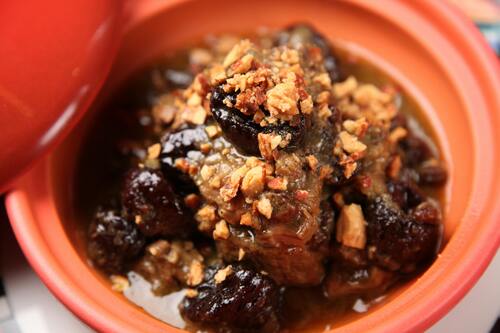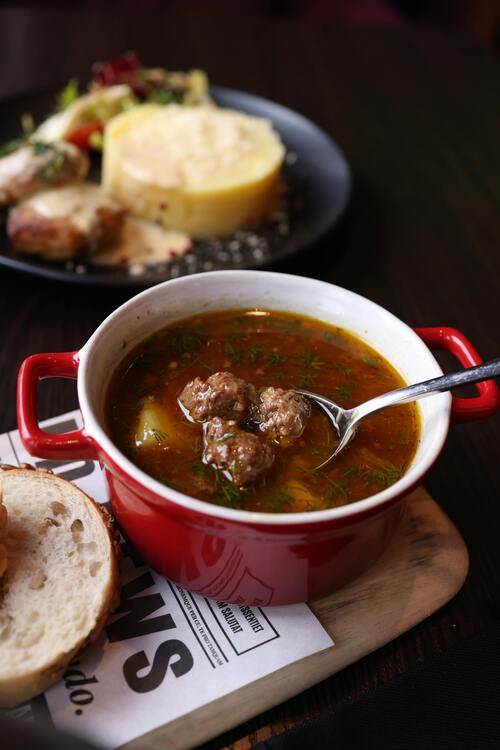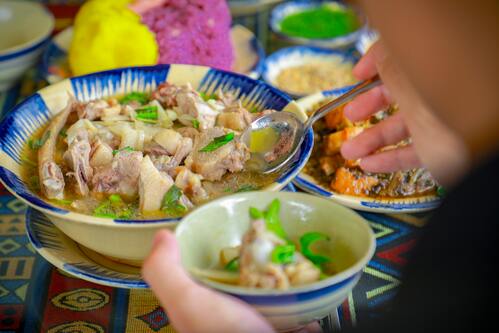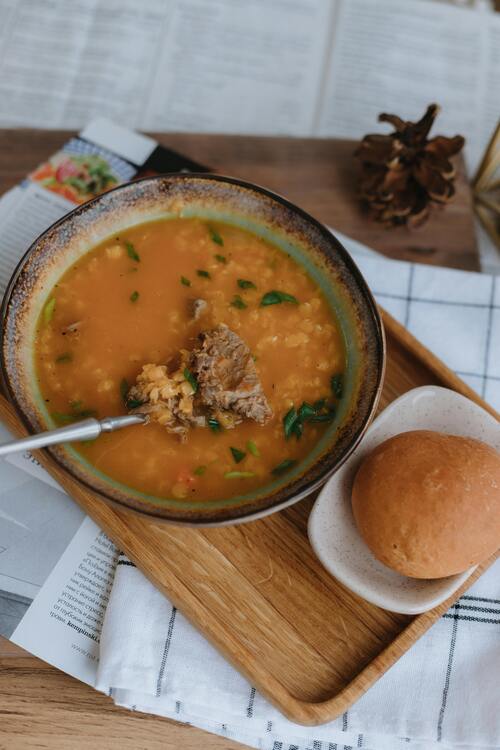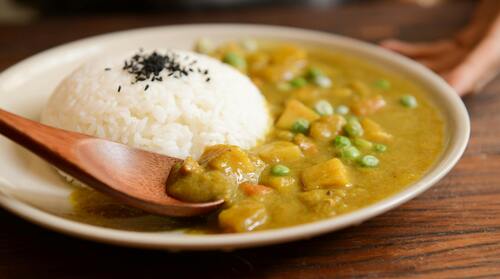What is Soup and Stew?
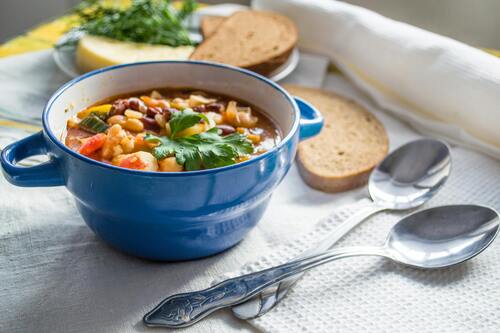
The definitions, histories, ingredients, cooking techniques, nutritional value, cultural importance, and much more of soup and stew will all be covered in detail in this page. Every segment will explore a distinct facet, offering a thorough synopsis of these culinary mainstays.
What Soup and Stew Are
Fundamentally, soup and stew are both liquid-based foods that usually consist of a number of ingredients cooked together to produce a flavorful combination. Generally speaking, soup has a thinner consistency and is frequently served as a light meal or appetizer. It can be thickened with pureed vegetables, grains, or legumes, or it can be clear like broth. Conversely, stew is thicker and heartier, frequently incorporating larger chunks of meat, vegetables, and sometimes beans or grains. A longer simmering time is made possible by the stew cooking method, which aids in combining the flavors and softening the contents. Gaining an understanding of these fundamental terms sets the stage for delving into the varied realm of soups and stews.
Historical Background

Soups and stews have their roots in ancient cultures, when the main cooking technique was boiling food in pots over open flames. In the Middle East, where people used clay pots to cook grains and beans, soup was first recorded around 6000 B.C. Soon after, stews probably appeared when people started combining meats and vegetables and cooking them slowly to bring out their flavors. Soups and stews have changed over time in many civilizations, according to regional ingredients and cooking methods. Around the world, they have been mainstays in diets, offering solace and sustenance when needed.
Frequently Used Ingredients
Soups and stews are extremely adaptable recipes that can include a wide range of ingredients. Broth or stock is a common basic ingredient for soups and can be produced from meat, fish, or vegetables. To add taste, vegetables like celery, carrots, onions, and garlic are frequently utilized. On the other hand, stews usually contain heartier ingredients like legumes (beans or lentils), root vegetables (potatoes, carrots, and parsnips), and chunks of meat (lamb, chicken, or beef). In both recipes, herbs and spices are essential components that contribute to the overall flavor profile. Depending on local tastes and seasonal availability, the selection of ingredients might vary greatly, creating an infinite number of possible combinations.
Cooking Methods and Techniques

The main differences between soup and stew cooking methods are temperature and cooking time. Soup is frequently made fast by simmering ingredients for a little amount of time. This enables bright colors and a fresh flavor, particularly in soups made with vegetables. In contrast, stews need more time to cook; they usually simmer for one to three hours. The ingredients can become more delicate and the flavors can fully develop thanks to this long cooking method. When making stews, methods like browning the meat before adding it to the pot, deglazing the pan, and adding ingredients gradually to build up layers of flavor are frequently used.
Value of Nutrition
Depending on the ingredients used, soup and stew can both be nutrient-dense options. In addition to being low in calories, soups frequently include a range of vegetables that offer vital vitamins and minerals. When prepared with broth, they can also be a great way to stay hydrated. Stews can provide a more substantial supper that is high in fiber and protein because of their heartier ingredients. However, things like using fatty meat cuts, adding creams, or using too much salt can affect the nutritional content. Both soup and stew can be included in a balanced diet by using healthy ingredients and thoughtful cooking techniques.
Cultural Importance

Many societies place a great deal of cultural significance on soup and stew. These foods are linked to coziness, family get-togethers, and communal eating in many cultures. Minestrone, for instance, is a traditional vegetable soup from Italy that showcases the nation’s abundant agricultural produce. Chili is a common stew in the US that unites people during social occasions and athletic competitions. Similar to this, noodle soups like pho and ramen are rituals that stress community and connection in Asian cultures, in addition to being meals. Soups and stews have cultural significance because they can unite people and foster a sense of community and shared experience.
Soup Types
There are numerous varieties of soups, each with distinctive qualities. Clear soups, like broth or consommé, are frequently served as appetizers and are usually tasty and light. Cream soups, such as tomato bisque or clam chowder, are rich and decadent options that are thickened with cream or a roux. Larger bits of vegetables or proteins are found in chunky soups, which make them heartier. In warm weather, cold soups like gazpacho are popular because they are refreshing. Every kind of soup contributes a unique flavor and texture, enabling countless variations and inventiveness in cooking.
Stew Types
Like soups, stews can be divided into different kinds. Tender chunks of meat cooked slowly in delicious broths are the highlight of meat-based stews like coq au vin and beef bourguignon. Seasonal vegetables is highlighted in vegetable stews like minestrone or ratatouille, which can be prepared with or without additional protein. There are also regional differences; for instance, Moroccan tagine blends spices and dried fruits to create a distinctive flavor profile, whereas Irish stew usually consists of lamb and root vegetables. Stews are a culinary canvas for creativity because of their diversity, which reflects the local ingredients and cultural influences.
Combining Side Dishes with Soups and Stews
Even though soups and stews can be filling on their own, they are frequently served with a variety of side dishes that improve the overall dining experience. With crispy baguettes, rolls, or flatbreads ideal for dipping, bread is a traditional accompaniment. The richness of stews or the warmth of soup can be counterbalanced by the crisp contrast that salads offer. Side dishes like rice, quinoa, or roasted vegetables can be served with the main course for a heartier meal. The selection of side dishes can improve the overall dining experience and provide for a filling and well-rounded meal.
Contemporary Innovations and Twists
Using cutting-edge methods and creative ingredients, chefs are reinventing classic soups and stews in current cooking procedures. Pressure cookers and slow cookers, for instance, have made it simpler to prepare these foods with less effort, enabling the development of complex tastes in a shorter amount of time. Furthermore, the popularity of plant-based diets has sparked innovative alterations to traditional dishes, with meat substitutes and vegetable-based broths emerging as popular options. Additionally, fusion cuisines are becoming more popular, combining ingredients from several culinary traditions to produce distinctive stews and soups that showcase influences from around the world. These contemporary variations show how versatile soups and stews are, guaranteeing their continued relevance in today’s gastronomic environment.
In conclusion
To sum up, stew and soup are popular and adaptable foods that provide warmth, coziness, and sustenance. Despite their similarities, they vary in terms of ingredient selection, cooking techniques, and consistency. Our love for soups and stews is increased when we are aware of their varied varieties, rich cultural significance, and lengthy history. Soup and stew are still praised for their capacity to unite people and offer sustenance in a variety of ways, whether they are consumed as a quick weeknight meal or as the focal point of a special event. These recipes continue to demonstrate the inventiveness and versatility of home cooking even as culinary customs change.

